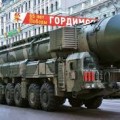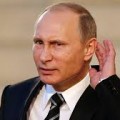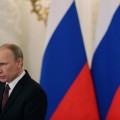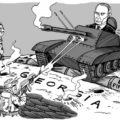Russia is increasingly threatening the security of Europe. Putin is continuing his massive investment in modern weapons. He has formed wholly new military divisions, and has deployed theater nuclear weapons to his borders with European states.
The threats extend beyond the raw exercise of military might. An ABC/Associated Press report cites Djukanovic, Montenegro’s former prime minister, calling on the European Union to stop Russia’s “destructive” influence in the Balkans, following what prosecutors said was a thwarted attempt to overthrow its pro-Western government and kill the tiny country’s most influential leader. Djukanovic warned that the Kremlin “is waging a kind of war against Europe and the West as a whole.”
Montenegro is scheduled to formally join the NATO alliance as its 29th member. Since 2009, NATO and Montenegro have worked closely together through the Membership Action Plan, which helps nations prepare for possible future membership.
A further indication of Putin’s consistent effort to rebuild the Soviet Empire can be seen in South Ossetia, technically part of Georgia. In 2008, Russian forces moved to separate the region from Georgia’s national government. The Russian news source RT reports that “The Russian government has approved an agreement with the Republic of South Ossetia that would allow certain military units of the latter nation to become the part of the Russian military forces… soldiers and officers of the South Ossetian units that will be included in the Russian military forces…In March 2015, Russia and South Ossetia signed a key treaty under which the two nations agreed to partially join their military forces…The treaty…is very similar to the agreement with the Caucasus Republic of Abkhazia signed in 2014.”
NATO’s just released 2016 annual report states that “At no time since the end of the Cold War has the NATO Alliance faced greater challenges to our security than it does today..Russia’s illegal annexation of Crimea, and destabilisation of Eastern Ukraine…marked…the start of a new era… So today, the Alliance must engage in both collective defence and crisis management at the same time. …We are currently deploying four multinational battlegroups to Estonia, Latvia, Lithuania and Poland, with contributions from 17 different Allied countries – including Canada and the United States…
As previously reported in the New York Analysis of Policy and Government, Russian provocations have also prompted Sweden and Finland, not officially part of NATO, to enhance their relations with the alliance. According to a study by Finland’s government, “Finland shares the broader strategic concerns of its EU partners, along with the rising challenges to both East and South of the continent. However, the EU does not possess the institutions and capabilities to deal with the full range of these strategic concerns by itself… As an unsatisfied power, Russia has made unpredictability a strategic and tactical virtue, underpinned by an impressive degree of political and military agility. Russia has adopted a revisionist stand towards the norms and principles governing the European order…”
Sweden, for its part, has moved closer to NATO, in response to Moscow’s significant threats. Moscow has moved air and missile forces close to Sweden, and is considering deploying much of its large tactical nuclear forces to the region as well. Russia possesses a ten to one advantage over the U.S. in tactical nuclear weapons. Moscow has engaged in simulated attacks on Sweden, and its intelligence forces constitute an ongoing threat.
There are tensions within NATO. Only five members contribute the required 2% of Gross domestic Product, according to Military.com the U.S. (3.6 percent), Greece (2.4), Poland (2.2), Britain (2.1) and Estonia (2.0), according to NATO statistics. The next three countries in order of contributions were France (1.8), Turkey (1.7) and Norway (1.5). Germany ranked 15th among NATO members at 1.2 percent. Luxembourg was last at 0.5 percent.
Frank V. Vernuccio, Jr., J.D. is the editor-in-chief of the New York Analysis of Policy & Government.

















Follow Us